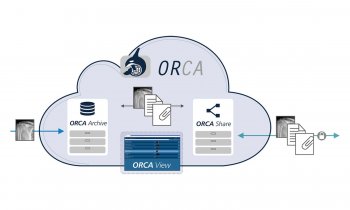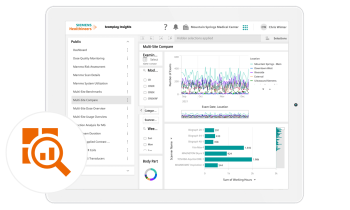ECR 2009
Experts will question computer use in radiology
The vast majority of the radiologist's work is now either made possible, or assisted, by computer technology. However, the full significance of that role is to be explored by leading radiologists and computer experts at the ECR Congress 2009.

Professor Davide Caramella, Associate Professor of Radiology in the Department of Radiology of the University of Pisa and Chairman of the Information Technology Committee of the European Association of Radiology, will examine the relationship between clinician and technology when chairing the discussion The Computer and the radiologist: Who assists whom?, along with contributions from three other leading experts. ‘Today, the professional life of a radiologist would be unthinkable without the use of computers; but it is important to be aware of the challenges that are posed by the pervasive diffusion of IT applications in clinical domains and the limitations that even state-of-the-art technology may have,’ explained Professor Caramella, who is also Deputy Editor of the International Journal of Computer Assisted Radiology and Surgery. He hopes that, by the end of this ECR session, participants will be able to decide whether it is they who are playing the lead in the ‘unavoidable partnership’ with the increasingly sophisticated computer systems available. ‘The importance of computers in radiology cannot be underestimated,’ he pointed out. ‘From the acquisition of images to the advanced image processing applications and the soft-copy reporting, all our tasks are either made possible or assisted by the use of computers.’ And, he added, there remains enormous potential from working with computers. ‘Image processing is the domain in which we have seen the most dramatic improvements. Just consider virtual colonoscopy or 4-D rendering of cardiac morphology and function. These advances are beneficial particularly for communicating the radiological data to the referring specialist.’
However, what led him to pose the session’s question are some concerns in the area of computer assisted diagnosis with a ‘vivacious debate’ focused on ‘who assists whom?’
‘Opinions vary from a flat refusal of CAD systems due to the high number of false positives – computers tend to “see too much” and radiologists must correct their mistakes – to the deep persuasion that, in some diagnostic domains, reporting can be done better by CAD systems than by radiologists.’
However, there remains no doubt that it must be the radiologist who is in charge, he emphasised. ‘The challenging aspect is how to incorporate technologies in a sort of “ideal reporting cockpit”, where the radiologist is offered tailored assistance by a set of “intelligent” software that helps him or her to review an increasing number of images with improved diagnostic performances.’
Albeit, the efficient integration of computer systems is important in reducing reporting time, he said, and at the same time preventing mistakes or omissions in radiological reports.
‘Moreover, the multimodal presentation of processed imaging data allows a better comprehension of the radiological results on the part of referring physicians: this is extremely valuable in preventing therapeutic errors.’
He foresees major breakthroughs in computer-aided radiology being achieved when structured reports will be generated as ‘drafts’ by reporting systems on the basis of the radiologist’s interaction with the diagnostic imaging datasets. This, he said, will overcome the current reluctance of radiologists to enter the challenging arena of structured reporting, due to the fear of an actual increase of their reporting time. ‘I’m sure that, in the next few years, computer technology will be able to demonstrate that it can provide us with tools able to assist us in producing information-rich reports in less time than is currently needed.’
21.11.2008











